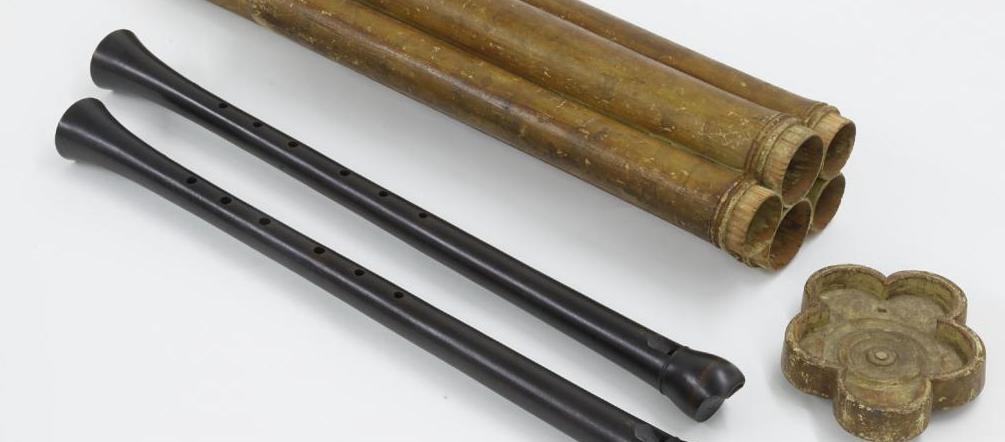
Collection – Musical instruments
The basis of the collection originates from the time the Historisches Museum was founded and from the 1880s with the takeover of the 16th- and 17th-century instruments of the city’s Kapellmusik, the instruments of the Pfeifergericht (“Court Piper”) and those of the Frankfurt Citizen Militia from the era of the Free City (1816 - 1866).
Up until the Second World War, acquisitions focused on instrument-making in Frankfurt in the early 19th century, especially pianos and grand pianos. Lutes, mandolins and guitars from the 17th and 18th centuries originated in Germany and England. It is assumed that these objects had an impact on domestic music in Frankfurt, and so the goal of maintaining a representative collection for Frankfurt’s musical history is only disrupted here and there.Exhibits from the Baroque period
The harpsichord from the workshop of Bartolomeo Steffanini from 1694 is a fine example and was bought to furnish a Baroque-style room that was acquired without furniture. The old stock of the collection is captivating with instruments of high quality such as the lute of Joachim Tielke (ca. 1675) or the tenor trombone of Sebastian Hainlein (1631), which is one of the best-preserved instruments of the Nuremberg master in the world.
Modern exhibits
During the first decade of the 21st century, the collection was complimented by a few excellent keyboard instruments. The harpsichord of Frankfurt composer and Hindemith pupil Bernhard Heiden (1910-2000) ended up in the collection of the Historisches Museum in 2011 as an endowment from private ownership. The instrument, which was built in the Bamberg workshop J. C. Neupert, belongs to the “VC 2” range – only 24 units were built between 1934 and 1939. The museum received a fortepiano, which was also donated from private ownership and which was built between 1850 and 1860 in the piano factory of Justus Kessler in Frankfurt/Bockenheim. The instrument is typical for the late period of building pianos by hand in the German-speaking world before the modern standard technology – cast iron frame and double repetition action – grew dominant.
A very special instrument was acquired for the varying musical events in the museum, which, since the reopening of the old building in 2012, have taken place in the Leopold-Sonnenmann-Saal. According to a concept designed by prominent Frankfurt architect Ferdinand Kramer, a grand piano with the compact design so characteristic of this era was created in 1927 in the Baldur pianoforte factory in Frankfurt. Only a few instruments were actually built. The Historisches Museum therefore considers itself even more lucky to have one in its inventory.
Details from the collection of musical instruments
Frankfurt Kapellmusik in the Barfüßerkirche

